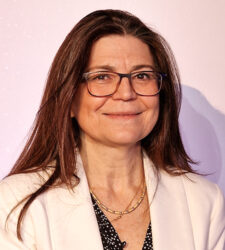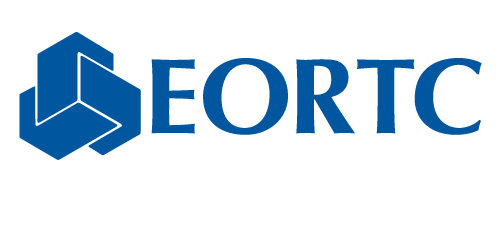Description
EORTC Melanoma Group aims to improve the clinical care of patients suffering with cutaneous or ocular melanoma, and to increase knowledge about melanoma acquisition and progression.
Related News
All newsMain Achievements
- Continued collaboration with French pharmaceutical company Pierre Fabre on the Columbus-AD study (2139-MG ) 1 to evaluate whether the combination of encorafenib and binimetinib in the adjuvant setting can improve survival for participants with surgically resected stage IIB/C BRAF V600E/ K-mutant cutaneous melanoma.
- Completed accrual for EORTC 1208 2 Minitub to evaluate the outcome of patients with a T2-T3 primary melanoma and minimal sentinel node tumour burden, treated by CLND or nodal observation.
- One especially promising proposal is ready for PRC review: phase III adjuvant study with Tebentafusp in HLA-A*0201 positive patients following definitive treatment of high-risk uveal melanoma.
- Presented an update at ASCO on ‘Relapse Free Survival and Distant Metastasis Free Survival’ as well as first data on cross-over or re-treatment for adjuvant pembrolizumab for high-risk stage III melanoma after complete resection.
- Deepened collaboration with the European Association of Dermato-Oncology (EADO) and European Melanoma.
1 W00090GE303 / EORTC-2139-MG: Adjuvant encorafenib & binimetinib vs. placebo in fully resected stage IIB/C BRAF V600E/K mutated melanoma: a randomized triple-blind phase III study in collaboration with the EORTC Melanoma Group
2 1208-MG Minitub: Prospective registry of Sentinel Node (SN) positive melanoma patients with minimal SN tumor burden who undergo Completion Lymph Node Dissection (CLND) or Nodal Observation.
EORTC research in this field has showed that sentinel node tumour burden according to the Rotterdam Criteria and the microanatomic location were the most important prognostic factors for melanoma-specific survival and non-sentinel node positivity in the completion lymph node dissection specimen. Based on this work, nowadays sentinel node tumor burden ≥ 1 mm is considered high risk and used for inclusion in adjuvant therapy trials.
EORTC studies also showed that the interferon-a adjuvant targeted therapy should be given to in a targeted patient population, and should probably not be offered to 70% of the patients that are currently being given this treatment.
Thanks to EORTC trial 18991, the United States Federal Drug Agency (US FDA) approved Sylatron™, pegylated interferon a-2b, for the treatment of melanoma patients with microscopic or gross nodal involvement within 84 days of definitive surgical resection including complete lymphadenectomy.  &
&
EORTC trial 18071 demonstrated that ipilimumab as an adjuvant therapy not only improved relapse-free survival but also prolonged distant metastasis-free survival and overall survival in patients with high-risk stage III melanoma. The US FDA approved adjuvant Yervoy in melanoma based on these results.  &
&
Related Projects
European Reference Networks (ERN) for rare solid tumours (EURACAN). EURACAN is involving references centers in Europe covering ten types of rare cancers. EURACAN will improve patient cares and facilitate research in rare cancers. EORTC is providing the clinical research infrastructure. (No website available yet)
Research Group
Group documents-
 Chair
ChairMario Mandalá
San Maria della Misericordia Hospital
Perugia, Italy
-
 Secretary
SecretaryBastian Schilling
Universitaetsklinikum Wuerzburg
Wuerzburg, Germany
-
 Treasurer
TreasurerSusana Puig
Hospital Clinic de Barcelona
Barcelona, Spain

